Double Peak Derived from Piezoelectric Coefficient Nonlinearity and Proposal for Self-Powered Systems
Zhang Bin,Li Dezhi ,Li Yingrui ,Ducharne Benjamin,Gao Jun
1.School of Mechanical,Electrical &Information,Shandong University,Weihai 264209,P.R.China;
2.School of Mechatronics Engineering,Harbin Institute of Technology,Harbin 150001,P.R.China;
3.Laboratoire de Génie Electrique et Ferroélectricité(LGEF),INSA de Lyon,Lyon 69621,France
0 Introduction
In piezoceramics,the piezoelectric effect allows to harvest electricity energy from ambient vibrations to supply low-power consumption devices.Wireless sensor networks(WSN)for monitoring the status of the environment have advantages such as distributed sensing capabilities,ease of deployment,real-time processing,a small size,a low cost,and high reliability[1-2].In longterm monitoring,the duration of monitoring is limited to the batteries′life span.A complete system has energy consuming elements such as sensing,communicating,and processing modules.With the development of integrated circuit and communication technologies,the required power consumption is decreasing.For example,compared with the former versions,Bluetooth 4.0 saves 90%of the energy while its transmission rate and distance increase.At the same time,energy extraction circuit[3-6], broadband technique[7-14]and various environmental vibration resource[15-16]in energy harvesting systems development augments the extraction percentage of energy,supplying more electricity for the devices.With the energy consumption decreasing,extraction energy increasing,and the power-management strategies optimizing,a self-powered system is developing rapidly.
To supply wireless sensor networks with a ubiquitous energy source,vibration can be turned into electricity using apiezoceramic.Lallart and Guyomar et al.[17-18]designed a self-powered structural health monitoring(SHM)system,including the autonomous wireless transmitter(AWT)and the autonomous wireless receiver(AWR),powered by apiezoceramic.Two pieces of piezoceramic were integrated into every module for energy harvesting.During health monitoring,data were transmitted to the base station.Hu et al.[19]studied the sandwich structure design based on piezoelectric nanogenerators and gave an illustration of photon detecting and environmental monitoring self-powered systems.These promising achievements urged more researchers to study self-powered systems.
Here,we primarily concentrate on the lowfrequency energy harvesting where piezoceramic power output has been analyzed and a self-powered system design has been proposed.Energy harvesting experiments,wireless sensor networks and their design will be illustrated.
1 Energy Harvesting from Piezoceramic
1.1 Configuration of electro-mechanical conversion
There are two types of piezoelectricity:direct piezoelectricity and converse piezoelectricity.Direct piezoelectricity is that the piezoceramic generates electric charges on the electrode due to the applied mechanical forces.To simulate the stimulating vibrations,an experimental setup has been established to measure energy harvesting in the following section.
For a bulk piezoceramic used in this study,the lumped model is modeled as mass-springdamper-piezo.Considering the boundary conditions,the constitutive equation for direct piezoelectricity is

where the superscripts″E,S″represent the constant electric field and constant strain,respectively and the subscript″33″represents the polarization direction coincides with the mechanical stress.T33is the mechanical stress,D33the electric displacement,Ethe electric field,and S the strain.The coefficient c is the piezoceramic elastic coefficient;and the coefficients e andεare the piezoelectric constant and the dielectric constant,respectively.The piezoelectric coefficient can be considered constant at low (frequency &energy)excitations,both electrical and mechanical.However,nonlinearity in the piezoelectric coefficient emerges at high excitations[12,14,20].
The output current,Io,can be calculated with the displacement u,force factorα,piezoceramic capacitance C0,and V the voltage across the piezoceramic.

When the rectifier circuit reaches its steady-state,Iois the current going through the load.By integration of Eq.(2),the charge is

where VLis the voltage across the load,RLthe load,and T0the period.Combining Eqs.(2,3),the rectified VLis a function of displacement amplitude UM,excitation circular frequencyω,given in Eq.(4)

Considering

the harvested power can be expressed as

where d33is the piezoelectric charge constant,l the thickness of a bulk piezoceramic,A the cross sectional area of the piezoceramic,and TMthe mechanical stress amplitude.It can be concluded that the harvested energy Es,the piezoelectric charge coefficient,and the mechanical stress obey the following relation

1.2 Experimental setup
Fig.1shows the schematic diagram of the experimental setup.
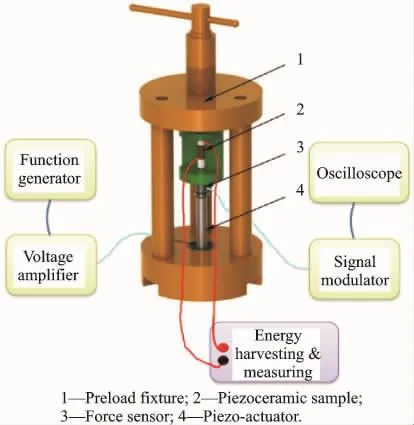
Fig.1 Piezoceramic energy harvesting experimental setup
The fixture provides a preload force on the piezoceramic and holds the other instruments.The waveform generator(TFG1005DDS,SUING)controls the voltage amplifier(XE-501-A,Newpi,Ltd.)to drive the piezo-actuator (PSt-150/10/80VS15,Newpi,Ltd.).The force sensor(XFC200R,Measurement Specialties,Ltd and ARD154,Measurement Specialties,Ltd.)measures the applied force.The oscilloscope (SDS 2104,SIGLENT)monitors all the variations.The rectifier bridge and LTC3588 (Linear Technology Corporation)are used as the energy harvesting module that uses the data acquisition system (2638A,Fluke Corporation)to measure the current and voltage.
Two types of piezoceramic,p-43and PMgN-51 (Weifang Jude Electronics Co.,Ltd.),were used in the experiment.6×5mm conductive copper tapes were adhered to both sides of the silver electrodes,as shown in Fig.2.The coefficients of the piezoceramics are shown in Table 1.
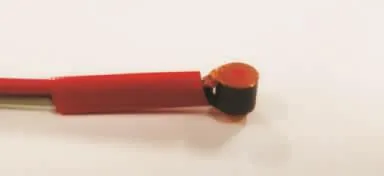
Fig.2 Piezoceramic sample

Table 1 Parameters of piezoceramic sample
1.3 Experiment and results
1.3.1 Full-bridge rectifier standard circuit
The standard energy harvesting circuit consists of a full-bridge rectifier circuit and a capacitor.The piezoceramic is connected in series.Measuring the electrical characteristics of the load,RL,allows calculation of the output power,as shown in Fig.3.

Fig.3 Standard energy harvesting circuit
In Fig.3,the capacitor has a capacitance of 47 μF.The voltage is measured and the data is shown in Fig.4,at a frequency of 10Hz with amplitude of 10MPa.

Fig.4 The open circuit voltage for a standard energy harvesting circuit
Here,the capacitor,Cr,is used as the energy storage element that then acts as a steady power source for the following section of the circuit.
The capacitance of the capacitor should be chosen according to the power consumption,voltage stability,and operating voltage.To illustrate the effect of the capacitance on the output voltage variation,simulations are shown in Fig.5.
Fig.5shows the pattern of a charging capacitor in an energy harvesting circuit.In a WSN node,the capacitor value should be carefully selected while considering the leakage resistance and duty ratio.
1.3.2 Load-carrying capacity
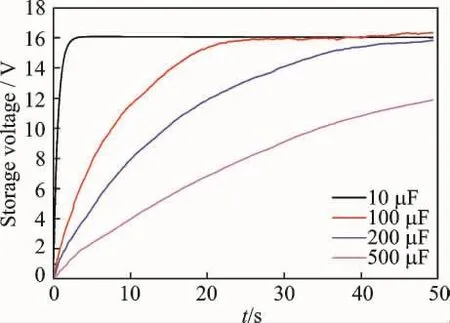
Fig.5 Simulations for different filtering capacitors
Load-carrying capacity is an index used to evaluate a power source.Load-carrying capacity influences the energy extraction circuit.The standard energy extraction circuit is evaluated with the capacitor C=22μF,the preload stress T=25MPa,and the amplitude of 10MPa at a frequency of 10Hz,acting on the sample of p-43 piezoceramic.After calculating the voltage and current,the output power is shown in Fig.6.
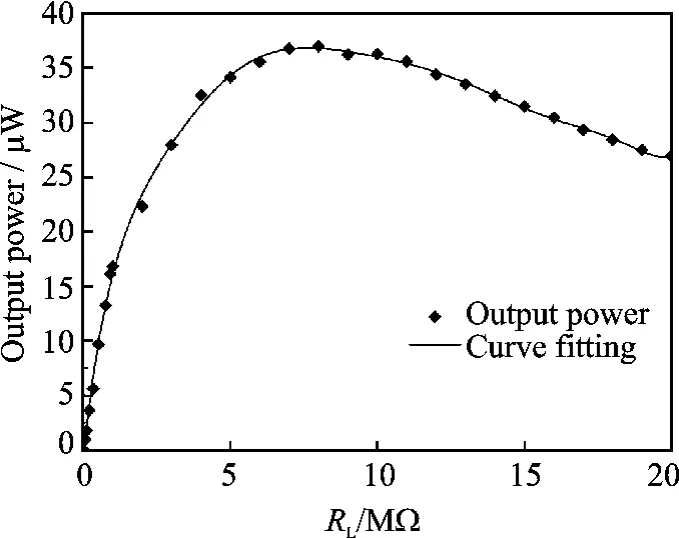
Fig.6 Influence of the load on output of energy
In Fig.6,the load has a large effect on the output power in a nonlinear manner.For our specimen and conditions,the best load selection is approximately 8MΩ,which leads to a maximum output power density of 261.7μW/cm3.
1.3.3 Output power evaluation
The output power of a piezoceramic depends upon the stress amplitude and the frequency.To satisfy the power consumption of a WSN node,a comprehensive evaluation of the piezoceramic output should be made.With this evaluation,the appropriate electronic components can be selected as the piezoceramic acting as a power source.In this paper,two types of piezoceramics have been tested under various stimulations.With the standard circuit where C=22μF,RL=8MΩ,p-43(ΔT=20MPa)and PMgN-51(ΔT=10MPa),the output power of the piezoceramic has been measured.The results are shown in Fig.7.
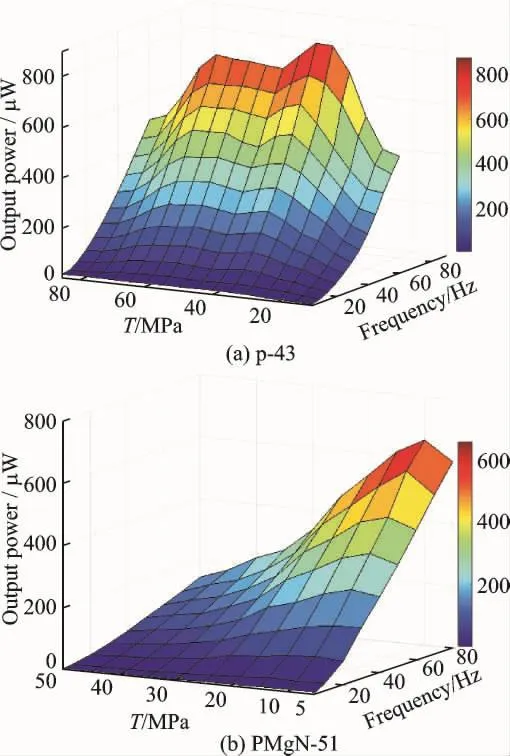
Fig.7 Output of piezoceramic samples under different frequencies and stress amplitudes
Compared with PMgN-51,p-43is a hard piezoceramic.As the amplitude increases,p-43 has a double wave crest in which the first peak is much larger than the second.In contrast,we can see that PMgN-51has only one peak after which the output power rapidly decreases because of the piezoceramic depolarization under high stress.Because the output power is proportional to(d33T)2,we can conclude that d33of the p-43decreases rapidly when the external stress reaches a certain threshold and then its decline slows down until the next threshold.The soft piezoceramic reached its turning point at a lower stress and its d33is greatly affected by the stress.The nonlinearity of the material coefficients should be taken into consideration when necessary given the expected external excitation on the piezoceramic.The hard piezoceramic has the ability to be deployed in a large range of stress stimulations.
2 Self-Powered WSN System
2.1 Transmission media
Given the requirements of the energy consumption and the operating conditions,the transmission media should be carefully selected.RF is currently the most popular transmission media[20].In addition to being license-free,infrared/optics has the advantages of easy set-up and low cost[21].
2.2 WSN system design
Here,both the hard and soft piezoceramics were used in the energy harvesting experiment and the power supply characteristics that were preliminarily studied indicate that more than 800μW could be generated by apiezoceramic(6×5mm).Many electronic components reach their rated operating conditions at hundreds of microwatts.Even milliwatt-level consumption components may work with energy management strategies.After considering the piezoceramic output power characteristics,LTC3588-1(Linearity)can be used as the energy extraction module,low energy consumption PIC18LF14K50(Microchip)can be used as the MCU,and A110LR09A(Anaren)can be used as the integrated RF module,which has a temperature sensor embedded.In addition,BMA222E (BOSCH)can be chosen as a motion state monitoring sensor[22].To simulate the operating state of an embedded-integrated wireless node′s energy consumption,a 470kΩresistor is used to represent the sleeping mode.The working mode is simulated by two resistors connected in parallel,470kΩ with 200 Ωcontrolled by a switch,as shown in Fig.8.
The energy storage of the extraction circuit and the power consumption of the simulated WSN are shown in Fig.9.In Fig.9,″energy storage″indicates all the energy stored in the capacitor Cs=47μF,while the″energy consumption″is due to the wireless sensor node.With low energy consumption electronic components and an energy management strategy,piezoceramics are promising power sources for wireless sensor networks.Piezoceramics realize the self-powered goal.

Fig 8 Simulations for self-powered WSN
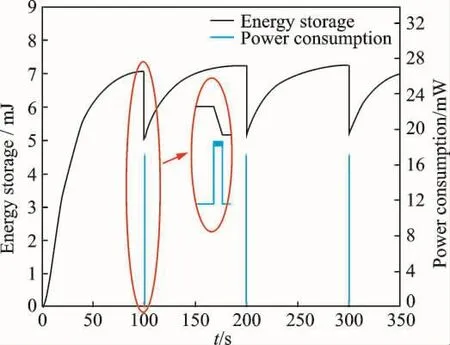
Fig.9 Simulations of energy storage and power consumption in a self-powered node
3 Conclusions
Energy harvesting from a piezoceramic is investigated under various stimulations,especially at high stress and low frequency.The results provide a guideline for using apiezoceramic in different stimulation states and the output power at those chosen states.For the embedded wireless sensor/actuator in the infrastructure,a bulk piezoceramic is a good choice as a power source in an infrastructure with a characteristic vibration.According to the energy harvesting experiment and simulations,1cm3could accommodate all of the mentioned electronic components in a selfpowered wireless sensor.The double peak phenomenon of p-43should be taken into consideration,especially in stimulation environments with a large range.Future studies will concentrate on the self-powered node and WSN design.
Acknowledgement
Grateful acknowledgement is given to the financial support from the China Postdoctoral Science Foundation(No.2015M580587).
[1] AKYILDIZ I F,VURAN M C.Wireless sensor networks[M].New Jersey:John Wiley &Sons,2010.
[2] YICK J,MUKHERJEE B,GHOSAL D.Wireless sensor network survey[J].Computer Networks,2008,52(12):2292-2330.
[3] GUYOMAR D,BADEL A,LEFEUVRE E,et al.Toward energy harvesting using active materials and conversion improvement by nonlinear processing[J].IEEE Transactions on Ultrasonics,Ferroelectrics,and Frequency Control,2005,52(4):584-595.
[4] SHEN H,QIU J,JI H,et al.Enhanced synchronized switch harvesting:A new energy harvesting scheme for efficient energy extraction[J].Smart Materials and Structures,2010,19(11):5017-5030.
[5] FORMOSA F,AGBOSSOU A E,WU Y,et al.Piezoelectric vibration energy harvesting by optimized synchronous electric charge extraction[J].Journal of Intelligent Material Systems &Structures,2013,24(12):1445-1458.
[6] LALLART M,GARBUIO L,PETIT L,et al.Double synchronized switch harvesting(DSSH):A new energy harvesting scheme for efficient energy extraction[J].IEEE Transactions on Ultrasonics,Ferroelectrics and Frequency Control,2008,55(10):2119-2130.
[7] WU Y,JI H,QIU J,et al.A 2-degree-of-freedom cubic nonlinear piezoelectric harvester intended for practical low-frequency vibration[J].Sensors and Actuators A:Physical,2017,264:1-10.
[8] LIU W Q,BADEL A,FORMOSA F,et al.A new figure of merit for wideband vibration energy harvesters[J].Smart Materials and Structures,2015,24(12):125012.
[9] LIU W,BADEL A,FORMOSA F,et al.A wideband integrated piezoelectric bistable generator:Experimental performance evaluation and potential for real environmental vibrations[J].Journal of Intelligent Material Systems and Structures,2015,26(7):872-877.
[10]WU Y,QIU J,JI H.A frequency up-converting harvester based on internal resonance in 2-DOF nonlinear systems[C]//Journal of Physics:Conference Series.IOP Publishing,2016,773(1):012092.
[11]TAN T,YAN Z,HUANG W.Broadband design of hybrid piezoelectric energy harvester[J].International Journal of Mechanical Sciences,2017,131:516-526.
[12]ZHANG B,DUCHARNE B,GUYOMAR D,et al.Energy harvesting based on piezoelectric Ericsson cycles in a piezoceramic material[J].The European Physical Journal Special Topics,2013,222(7):1733-1743.
[13]ZHANG B,DUCHARNE B,GUPTA B,et al.Experimental sea wave energy extractor based on piezoelectric Ericsson cycles[J].Journal of Intelligent Material Systems and Structures,2017:1045389X17730917.
[14]ZHANG B,DUCHARNE B,SEBALD G,et al.Characterization of fractional order for high-frequency bandwidth model of dielectric ferroelectrics[J].Journal of Intelligent Material Systems and Structures,2016,27(4):437-443.
[15]CHEN R W,REN L,JIANG X C,et al.Recent advances and prospects of ocean wave energy harvesting technology[J].Journal of Nanjing University of Aeronautics & Astronautics,2014,46(6):2.(in Chinese)
[16]LALLART M,GUYOMAR D,JAYET Y,et al.Synchronized switch harvesting applied to self-powered smart systems:Piezoactive microgenerators for autonomous wireless receivers[J].Sensors and Actuators A:Physical,2008,147(1):263-272.
[17]GUYOMAR D,JAYET Y,PETIT L,et al.Synchronized switch harvesting applied to selfpowered smart systems:Piezoactive microgenerators for autonomous wireless transmitters[J].Sensors and Actuators A:Physical,2007,138(1):151-160.
[18]HU Y,WANG Z L.Recent progress in piezoelectric nanogenerators as a sustainable power source in selfpowered systems and active sensors[J].Nano Energy,2015,14(1):3-14.
[19]DUCHARNE B,ZHANG B,GUYOMAR D,et al.Fractional derivative operators for modeling piezoceramic polarization behaviors under dynamic mechanical stress excitation[J].Sensors and Actuators A:Physical,2013,189(2):74-79.
[20]AKYILDIZ I F,SU W,SANKARA S Y,et al.A survey on sensor networks[J].IEEE Communications Magazine,2002,40(8):102-114.
[21]KAHN J,KATZ R,PISTER K.Next century challenges:mobile networking for"Smart Dust" [C]//Proceedings of the 5th Annual ACM/IEEE International Conference on Mobile Computing and Networking.New York:[s.n.],1999:271-278.
[22]WU Y.Récupération d'énergie vibratoire large bande à partir de transducteurs piézoélectriques [D].France:University de Grenoble,2014.(In French)
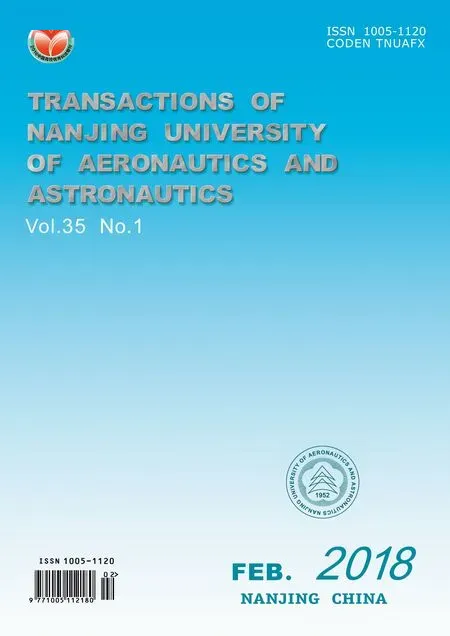 Transactions of Nanjing University of Aeronautics and Astronautics2018年1期
Transactions of Nanjing University of Aeronautics and Astronautics2018年1期
- Transactions of Nanjing University of Aeronautics and Astronautics的其它文章
- Parametric Study of Low Frequency Broadband Rectilinear-to-Rotary Vibrational Energy Harvesting
- Countermeasure Against Regenerative and Forced Chatter of Flexible Workpieces in Milling Processs Using Bi-directional Excitation
- Motion Analysis of Trunk Using Simplified Human Model in Sagittal Plane
- Experiment on a Semi-Active In-Car Crib with Joint Application of Regular and Inverted Pendulum Mechanisms Using Scale Model
- Variational Mode Decomposition for Rotating Machinery Condition Monitoring Using Vibration Signals
- Rotational Motions Excited by Vertical Harmonic Motions
